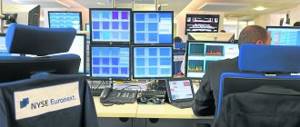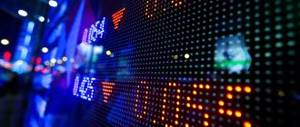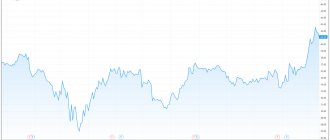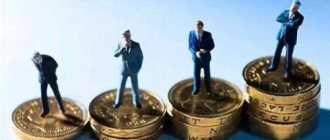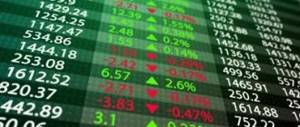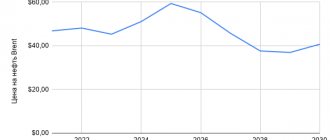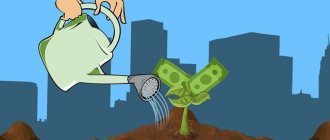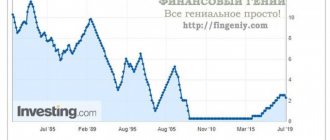In the first half of 2021, almost all asset classes in global markets showed positive dynamics: equity markets in developed and emerging countries rose; bond yields, both in domestic and foreign currencies, have fallen in most countries; emerging market risk premiums have fallen; volatility indicators returned to the levels of early/mid 2021. The softening of financial conditions in global markets occurred due to a paradigm shift among leading central banks: instead of continuing the ongoing normalization of monetary policy (increasing rates that remained ultra-low for almost a decade), the possibility of its new easing in in the nearest future. The shift was prompted by increasingly clear signals of a slowdown in global economic growth and continued high risks associated with the trade standoff between the United States and China, which was not resolved at the G20 summit in Osaka. In developed countries, inflation has not risen to the target levels of central banks, and slower economic growth, all other things being equal, leads to a decrease in inflationary pressure. Central banks of developed countries are also reacting to this.
The slowdown in global economic growth is now the main threat to global financial markets. The risks of a worsening situation and increased capital outflow from emerging markets are high. However, there are several reasons why the late 2018 scenario of increased capital outflows from emerging markets and rising bond yields is unlikely to be repeated:
- Firstly, central banks of developed countries, primarily the US Federal Reserve, are taking a softer position than a year ago. The Fed raised rates four times last year and was set to continue normalizing policy in 2021. This was one of the reasons for increased capital outflows from emerging markets. Now the Fed has signaled the possibility of cutting rates and is set to stop the process of reducing its balance sheet in September 2021, which in itself eases the pressure on risk assets. The growth of both risk and defensive assets suggests that market participants consider the expected reaction of central banks of developed countries to be quite sufficient to prevent a further slowdown in global economic growth.
- Second, emerging market central banks also responded to last year's Fed rate hike by raising their rates. And although this trend has now reversed, the current level of rates, coupled with a more dovish position of central banks in developed countries, reduces the incentive for investors to withdraw funds.
Financial Market Panic of 1792
It was in 1792 that there was the first movement, when shares in the financial markets rose in price by an average of a quarter of their value. This happened, naturally, in the capital of universal evil and universal hatred, in the country that is to blame for the fact that Russian pensioners live so poorly - in the USA...
Happy Pindos took their hard-earned money to brokers for several years, collected loans and bought all sorts of game, without even thinking that a hard bubble was inflating in the market. And it's all the fault of the damn banks and damn speculators (as usual). Before this, there was an active war of independence between the United States and England. There was a huge amount of land available, and one smart guy named Alexander Macomb took out a big loan from the First Bank of the United States to purchase the land. To give you an idea, the size of the land was something like one-eighth the size of New York State. Macomb dreamed of reselling this land to all sorts of poor souls at triple the price, but in the end the land turned out to be of no use to anyone. As a result, Macomb's money ran out and he fell behind on his loan. Next came William Duer (some sources indicate that he and Makomob were in cahoots), who began to buy the bank’s debt securities in order to then sell them at a higher price, but he underestimated his strength, got bream and crap himself. As a result, none of these stupid schemers had any money, they began to massively drain everything they could: not only IOUs, but also the bank shares that they had. A large flow of sales of bank shares provoked their massive drain. Looking at all this, ordinary Pindos ran to take their money from the bank accounts where it was on deposit, and throw off all the shares that they had in their hands.
The handsome guy turned out to be Alexander Hamilton (US Secretary of the Treasury), who quickly kicked everyone, forced them to continue issuing loans secured by US debt securities, but at an inflated rate, allowed taxes, duties and fines to be paid with US debt securities and promised to invest a lot of money in the banking system by purchasing bank securities so that their owners have no doubt that they will continue to use golden toilets. Literally a month later, the situation in the financial markets stabilized until the next crisis.
Global Gas Measurement
The general scheme for the development of the Russian gas industry involves connecting the Soyuz-Vostok with the already existing Power of Siberia, as well as the construction of another gas bridge - between the Power of Siberia and the existing Sakhalin-Khabarovsk-Vladivostok gas pipeline. With the construction of these two short links, Russia will receive a unified gas system from St. Petersburg to Vladivostok - with gas pipes connecting to all major seaports.
The construction of such interconnectors will provide a resource base for another ambitious Russian project - a liquefied natural gas plant in Vladivostok. In this option, Soyuz-Vostok, the existing Power of Siberia and offshore fields within the Sakhalin-3 project will be able to provide a single route for transferring almost any volume of gas to new global markets.
Of course, the resource base for the LNG plant in Vladivostok will be remote or offshore fields, and the price of such gas will be quite high, but liquefaction will make it possible to sell it much more expensive than pipeline gas and on a global scale.
The access of Russia's unified pipeline network to the Pacific borders can be compared in importance to the construction of the Trans-Siberian Railway at the beginning of the twentieth century. After all, Asian countries have a slightly different policy on the “green” issue, preferring to replace environmentally polluting coal energy with natural gas. Therefore, consumption in them will only grow in the next 10-20 years, and Russian LNG will make it possible to quickly enter such new markets, replacing coal that is going out of use.
All these new projects will make Russia’s exit from the European market painless if its natural gas is supplied by the European Union as an “unwanted guest.” In the end, any trade deal requires the voluntary consent of the parties - and if the EU already has binding plans involving the abandonment of Russian gas, then Russia will inevitably have counter plans where it would be more profitable to sell this gas.
1929 stock market crash
That year, Americans became very interested in stocks... Their prices were rising, demand was increasing all the time, people were swimming in money, but on October 24, 1929, a massive fall in stocks began. The Dow Jones Industrial Average was at 381.17 and some very wealthy Vasya decided to take profit and sell shares. The market took this as a waste. During the day, 12,900,000 units of securities were sold, and the Dow Jones Industrial Average fell by 11%. It was then that everyone realized that the scribe had arrived. During the week, another 30,000,000 shares were sold, the market as a whole shrank by 40%, losing more than $30,000,000,000 in capitalization (over the same week!!!). This began the Great Depression... Banks closed, factories did not receive loans and also closed, driving people out onto the streets. By the way, it was after this crisis in the US financial market that the Securities Commission was created, which was supposed to prevent the further occurrence of such situations.
Forex economic calendar (FOREX)
The table presents the indicators and indicates the degree of importance of each indicator. The most important news has three exclamation marks; you should be very careful when publishing such news, as the market can move hundreds of points in a few minutes. Thus, the Forex economic calendar and its analysis are an important component of the work of any trader, even if you trade only moving averages, you still add important indicators to your trading terminal in the form of vertical lines. If you are into fundamental analysis, visit the Central Bank Interest Rates .
Doomsday October 17, 1973
This time Israel decided to go to war with Arab countries. The war lasted a couple of weeks, but the Arab world was very upset and stopped supplying oil to markets that supported Israel (USA, England, Japan, France). Oil prices began to rise wildly, and stock indices began to fall. The US stock market fell by 45%, and President Nixon recommended that Americans live more modestly. The Anglo-Saxons were hit even harder, their stock market fell by 73%, causing mass protests across the country. It took a long time for markets to recover... The US stock market by 1987, and the UK by 1993.
Economic news teletrade
Teletrade economic news, namely the calendar of events, is an offer to identify important levels on the chart.
For another way to find important zones, read: Murray levels, trading practice. At the same time, using the calendar you can find both vertical and horizontal important areas. I told you what comes out of this now a little earlier. Read the page: Alpari News and calmly use the services of this broker, I like it. By the way, there, I just told you what you can do by analyzing simple statistics of a currency pair. How should you feel about this proposal? There is no analysis on the part of the broker. But during flat periods lasting a couple of months, it works great!
Dotcom bubble of 2000
In the late 90s of the 20th century, shares of Internet companies soared wildly. Experts vying with each other shouted that the future had arrived, we urgently needed to invest in the IT business. The owners of that same business went crazy from such gestures and began buying cars, real estate and yachts in bulk. Crazy investments were spent on empty advertising and marketing, and not on business development. As a result, on March 10, 2000, the NASDAQ index closed with a minus of exactly one and a half times. It was not only investors who received the bream, but also the directors of all these dot-coms, whose companies went bankrupt at wild speed. Some escaped with financial losses, and the most talented guys went to Kolyma to knit socks for fraud and waste of shareholders’ money (or where do they go to prison in America?).
News of the Court of Justice of the European Union
The Belgian government petitioned the CJEU against a number of adopted recommendations regarding gambling. Their main goal is to protect consumers and improve established standards. The EU Court of Justice rejected the proposed amendments, arguing that they were not legally binding.
This is not the first time that the CJEU has decided to reject the current regime in Hungary. This was announced in a resolution that was published literally at the end of March. The provision of online games for real money can only be provided by land-based casinos with a license. A so-called radical restriction is observed across the country. Due to this situation, some large operators have been fined. One of them was the world famous Unibet.
2007 mortgage crisis
Since the early 2000s, the US mortgage market has grown by leaps and bounds. Until 2004, the share of high-risk loans on the market was within 8%, but then greedy bank employees decided that one golden toilet was not enough, they had to buy 5 at once and take turns using them! Mortgage loans began to be given to everyone.
“No, but what? If they don't pay off the loan, we'll take the house. Prices for houses are also only rising…” thought the bankers.
A sobering kick came when the share of high-risk mortgages approached the 20% mark. Real estate prices rose until 2006, and then it somehow became more difficult for everyone to repay loans. Bankers began to confiscate real estate from debtors and sell it on the market at bargain prices (to sell it faster). Debtors took houses for one price, but saw prices on the market that were much lower. Attempts at speculation began: the debtors themselves sold off the mortgaged real estate until it was worth even less, so that they could then buy it cheaper. As a result, all these sheep collapsed the real estate market, the financial system of the state, and the world economy also suffered... There was a shitty cloud of debtors on the market, a shitty cloud of useless real estate at prices much lower than those at which it was bought, a shitty cloud of debt securities that turned out to be no longer needed by anyone, and the bankers were left without golden toilets at all (nobody paid off the loans, but Bentley needed to be filled...). Then Lehman Brothers bank went bankrupt, shares of the insurance company AIG fell by 60%, and many more American banks needed help from the Federal Reserve in order not to self-destruct. Shares in the banking sector collapsed, which led to a wave of decline in other sectors, including resource extraction. Overall, the mortgage crisis hit the stock market in a way that nothing had hit for 20 years at that time.
Even more LNG may go past Europe with empty underground gas storage facilities to Asia
China expects electricity shortages in key provinces during the summer peak of consumption, and Japan plans to restart old gas generation by winter. All this could spur LNG purchases and higher gas prices in Asia. For Europe, which is now a less attractive destination, this could lead to a reduction in LNG supplies and even greater demand for Russian gas. Gazprom expects to satisfy additional demand after the launch of Nord Stream 2.
Five key Chinese provinces - Shandong, Guangdong, Jiangsu, Zhejiang and Yunnan - have warned that they could experience power outages during peak summer demand. S&P Global Platts reports that last year they consumed a third of the country's electricity - 75 TW.
The Shandong Provincial Energy Bureau, for example, reports that the shortage could be up to 2 million kW and will increase if there are unexpected interruptions in the supply of coal and gas.
Chinese authorities have already prioritized security of energy supply over climate commitments to reduce fossil fuel use, S&P Global Platts notes. Despite high costs, gas-fired power plants are expected to operate at full capacity. Moreover, this year in China they plan to launch new gas power plants with a total capacity of 8 GW, and this will increase the gas generation demand by another 8.6%.
“This will inevitably lead to an increase in demand for gas, including LNG, and will spur an increase in prices for spot supplies, similar to the situation in the winter of 2020/2021,” the agency writes. At that time, gas prices in Asia rose above $1,200 per thousand cubic meters.
According to Reuters, China could import 7.4 million tons of LNG (more than 10 billion cubic meters of gas) in May, up 29% from last year.
Meanwhile, Bloomberg reporter Stephen Staprzynski tweeted that the Japanese government plans to ask Tepco and Jera to restart their old gas-fired power plants by winter to avoid power shortages.
This situation does not bode well for Europe, which is faced with record low fuel reserves in storage but will not be able to count on additional volumes of LNG. Asia continues to be a more attractive destination for LNG suppliers. So, today, LNG quotes for delivery to Northeast Asia (JKM) in July were at $360 per thousand cubic meters, while in Europe the price of gas on the exchanges does not exceed $300, but began to rise again on news of the refusal. Gazprom" from additional Ukrainian transit.
In March and April, LNG supplies to Europe reached record levels (over 10 billion cubic meters per month), but with current supplies from other sources, this is still not enough to fill storage facilities to last year’s levels.
As EADaily , Gazprom is not going to significantly increase gas exports to Europe in the near future and did not buy today, May 25, significant additional Ukrainian transit capacity. The company plans to meet additional demand with the help of Nord Stream 2, which could be launched in the fall. Gazprom's closest competitors, meanwhile, will not be able to increase gas exports, and the company can count on the fact that with peak demand in the next heating season, the entire capacity of the gas pipeline that has not yet been built may be needed. After scandalous changes to the gas directive, Nord Stream 2 can so far only operate at half capacity.
